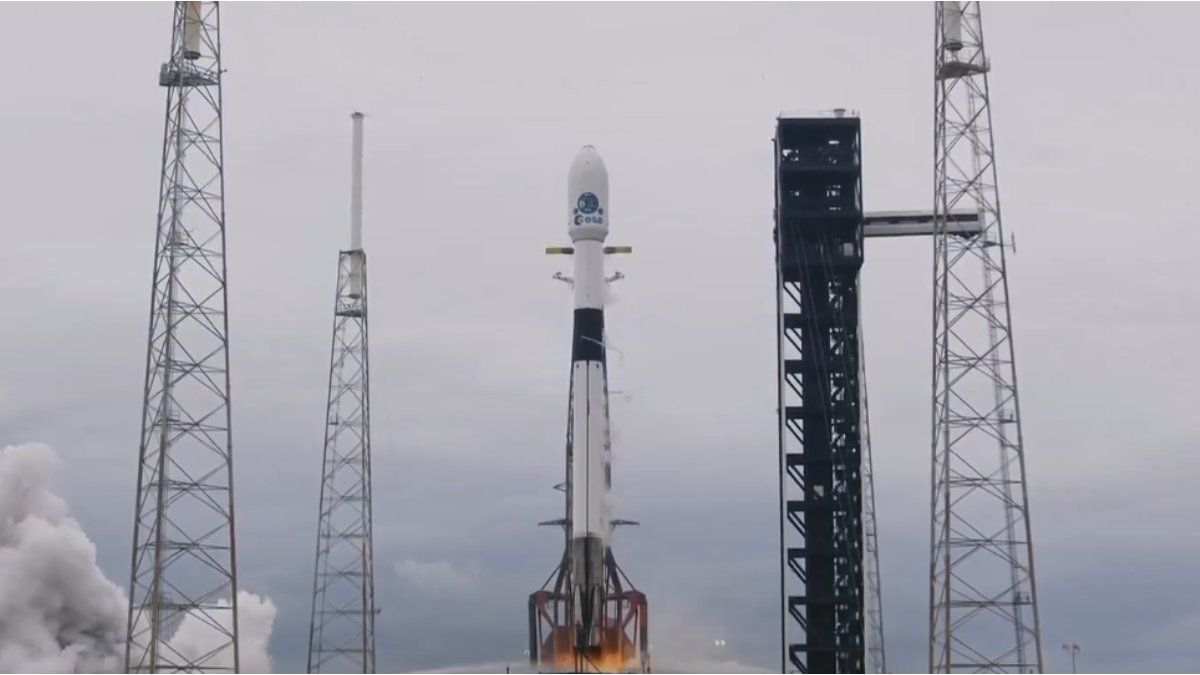The Hera probewhich will study the asteroid Dimorphos and will be a defense strategy for the Land against asteroids, successfully took off on Monday from Cape Canaveral (Florida) docked with a SpaceX Falcon 9 launcher, as reported live by the European Space Agency (THAT).
The mission plans to reach end of 2026 near this asteroid, which was hit two years ago by a spacecraft from the POT to divert its trajectory, in a test of “planetary defense“unprecedented. THAT He said that Hera will conduct a “crime scene investigation” of sorts.
Placed on a Falcon 9 rocket, the ESA probe successfully took off at 10:52 localdespite the adverse weather conditions due to the Hurricane Miltonwhich is approaching the coast of Florida, in the southeastern United States.
ESA Hera (1).png
The mission has two nanosatellites: one that will land on the surface of the asteroid to investigate it with radar, and another that will study its composition from further away.
European Space Agency
Joseph Aschbacherdirector of ESA, said in the live broadcast of the launch that “Hera will gather the data we need to convert kinetic impact into a well-understood and repeatable technique that we can all count on one day.
How was Hera’s takeoff?
The tense takeoff of the rocket SpaceX Falcon 9was celebrated with applause by the teams on the ground, which intensified after receiving the first signals from the ship. After an hour of launch, Hera separated from the rocket and began its two year trip through space.
He launch was in doubt due to the approach of the Hurricane Miltonwhich on Monday became a storm of category 5the maximum of its scale. SpaceX stated on Sunday that there was only a 15% chance of carrying out the launch.
The POT said Milton, which is expected to make landfall in Florida on Wednesday, will delay the launch of the European Clipper missionscheduled to depart from Cape Canaveral on Thursday. However, the United States Federal Aviation Administrationconsidered that the nature of the problem represented a low risk for Hera.
The history of the asteroid Dimorphos and the new European mission
He Dimorphos asteroidwhich was about 11 million kilometers from Earth when the disaster occurred. impactmeasured about 160 meters in diameter and did not represent any danger to our planet. When the apparatus of the POT collided with him, managed to displace him and reduce its orbit in 33 minutes.
The European mission, which costs about US$400 millionwill perform measurements with two nanosatellites: one that will land on the surface of the asteroid to investigate it with radar, and another that will study its composition from further away.
It is estimated that a kilometer-long object, which can trigger a global catastrophe like the extinction of the dinosaurs, crashes into the Earth every 500,000 yearsand a 140-meter asteroid, which is the threshold of a regional catastrophe, each 20,000 years.
Among those objects close to the Landmost of which come from the asteroid belt between Mars and Jupiterpractically everyone who has a kilometer and none of them threaten to Earth in the next century. There have also been no direct threats reported from those with 140 meters, but 40% of those of this type have been identified.
Source: Ambito
I am Pierce Boyd, a driven and ambitious professional working in the news industry. I have been writing for 24 Hours Worlds for over five years, specializing in sports section coverage. During my tenure at the publication, I have built an impressive portfolio of articles that has earned me a reputation as an experienced journalist and content creator.




